The Cholesterol-Lowering Secret in Your Spice Rack
High cholesterol remains a significant public health concern, with the CDC reporting that nearly 94 million U.S. adults have total cholesterol levels above 200 mg/dL. This silent condition gradually damages the cardiovascular system, increasing the risk of heart disease and stroke. Alarmingly, most individuals remain unaware of their elevated cholesterol until complications arise, as symptoms typically manifest only in advanced stages. Early awareness and lifestyle interventions are essential in combating this prevalent health issue and safeguarding long-term heart health.
1. Turmeric
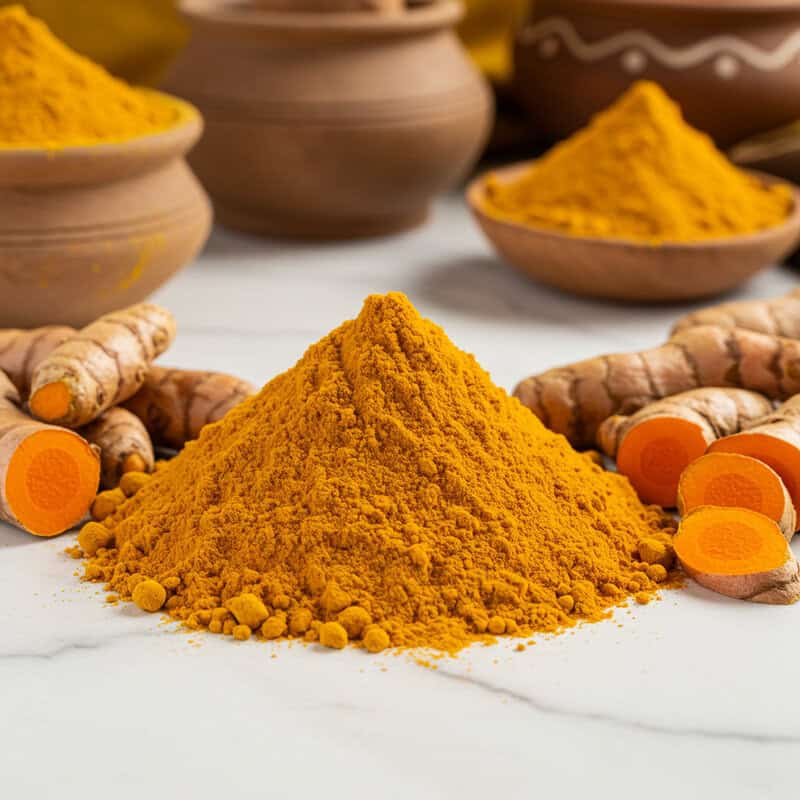
Turmeric, a golden-yellow spice widely used in Indian cuisine, owes its vibrant color and health benefits to its active compound, curcumin. Research suggests that curcumin can significantly lower LDL (“bad”) cholesterol levels by reducing cholesterol absorption in the gut and improving lipid metabolism. A 2017 review published in the journal Foods highlights curcumin’s ability to decrease LDL cholesterol while raising HDL (“good”) cholesterol, thus supporting overall cardiovascular health. Turmeric’s presence in everyday dishes such as curries, lentil soups, and rice not only boosts flavor but also delivers vital health-promoting properties.
Traditional Indian diets incorporate turmeric liberally, with daily intakes ranging from 500 mg to 2,000 mg of curcumin—an amount considered both effective and safe for most adults according to the National Institutes of Health. To maximize absorption, it is recommended to consume turmeric alongside black pepper, which contains piperine, an enhancer of curcumin’s bioavailability. Whether added to recipes, taken as a supplement, or mixed into teas, incorporating turmeric into your routine can be a simple yet powerful step toward managing cholesterol naturally.
2. Garlic

Garlic has been cherished for centuries not only as a culinary staple but also for its medicinal properties, particularly in heart health. Its principal active compound, allicin, is released when garlic is chopped or crushed and has been shown to effectively reduce total and LDL cholesterol levels. According to a meta-analysis published in Nutrition Reviews, allicin helps inhibit cholesterol synthesis in the liver, leading to measurable drops in cholesterol for individuals with elevated levels.
Garlic can be consumed fresh—added raw to salads, dressings, or dips—or as a supplement. While supplements may offer a convenient alternative, studies suggest that fresh garlic provides a higher concentration of allicin, although standardized supplements can still be effective. For those concerned about garlic’s potent odor, odorless garlic capsules are available, but it’s important to choose reputable brands with proven allicin content, as some products may lose potency during processing. To maximize benefits, experts recommend consuming 1-2 cloves of raw garlic daily or following a supplement’s recommended dosage, always consulting a healthcare provider before starting new regimens. For more on garlic’s health benefits, visit the NIH Garlic Fact Sheet.
3. Cinnamon

Cinnamon is more than just a beloved baking spice; it has garnered attention for its potential to help regulate lipid levels and support cardiovascular health. Several studies, including a systematic review published in Annals of Family Medicine, have demonstrated that regular cinnamon consumption can modestly reduce total cholesterol, LDL cholesterol, and triglycerides, while increasing HDL cholesterol. The active compounds in cinnamon, such as cinnamaldehyde, are believed to enhance lipid metabolism and inhibit cholesterol absorption in the gut.
There are two main types of cinnamon: Ceylon (also called “true” cinnamon) and Cassia. While both types offer cholesterol-lowering benefits, Ceylon cinnamon contains lower levels of coumarin, a naturally occurring compound that may cause liver damage in high amounts. For regular use, Ceylon cinnamon is generally considered safer. Cinnamon can be easily added to daily meals: sprinkle it on oatmeal, yogurt, or fruit, stir it into smoothies, or use it to flavor coffee and baked goods. A typical recommended dose is 1/2 to 1 teaspoon per day. For more information on cinnamon varieties and health benefits, see the Medical News Today cinnamon guide.
4. Black Pepper

Black pepper is a household staple around the world, but few realize that its active compound, piperine, may play a role in cholesterol management. Research highlighted in Critical Reviews in Food Science and Nutrition suggests that piperine can help lower LDL cholesterol and triglycerides by improving lipid metabolism and reducing oxidative stress. However, black pepper’s most remarkable benefit may lie in its synergy with other spices, particularly turmeric.
Piperine significantly enhances the absorption of curcumin, the key compound in turmeric, amplifying its cholesterol-lowering and anti-inflammatory effects. This combination is a cornerstone in South Asian and Middle Eastern cuisines, where both spices are used in curries, stews, and rice dishes. Black pepper’s pungent, warming flavor also makes it a versatile seasoning for eggs, salads, vegetables, and grilled meats. For optimal health benefits, it’s recommended to pair black pepper with turmeric when cooking or preparing supplements to maximize curcumin’s potency. A pinch of freshly ground black pepper is sufficient to boost absorption. To learn more about black pepper’s benefits and culinary applications, visit Healthline’s guide to black pepper.
5. Ginger
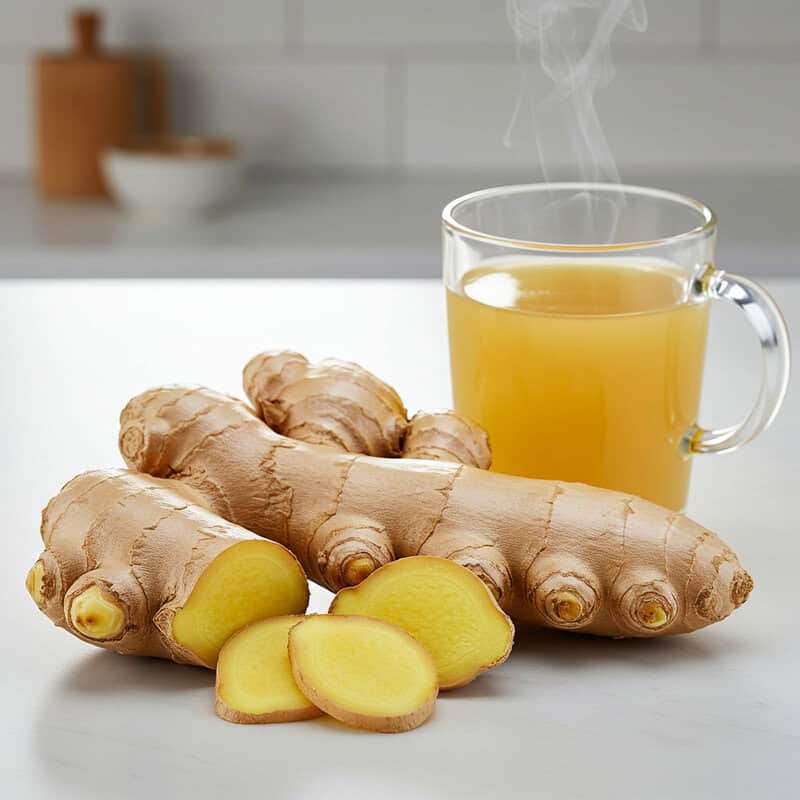
Ginger is renowned for its zesty flavor and medicinal properties, with gingerols as its key bioactive compounds. Studies, such as one published in the Journal of Nutrition & Metabolism, have shown that gingerols can positively impact cholesterol levels by lowering LDL cholesterol and boosting HDL cholesterol. Ginger works by enhancing fat metabolism and reducing oxidative stress, which contributes to a healthier cardiovascular profile.
Ginger tea is a cultural staple across Asia, often enjoyed for both its comforting taste and its health benefits. Whether steeped as a warming beverage or added to stir-fries, soups, and marinades, ginger offers versatility in both fresh and powdered forms. Fresh ginger root can be peeled and grated into smoothies, salad dressings, or sauces, while powdered ginger is convenient for baking or seasoning vegetables and meats. For cholesterol management, incorporating 1-2 grams of ginger daily is considered beneficial and safe for most people. To further explore ginger’s health potential and creative culinary uses, visit Healthline’s guide on ginger and cholesterol.
6. Fenugreek
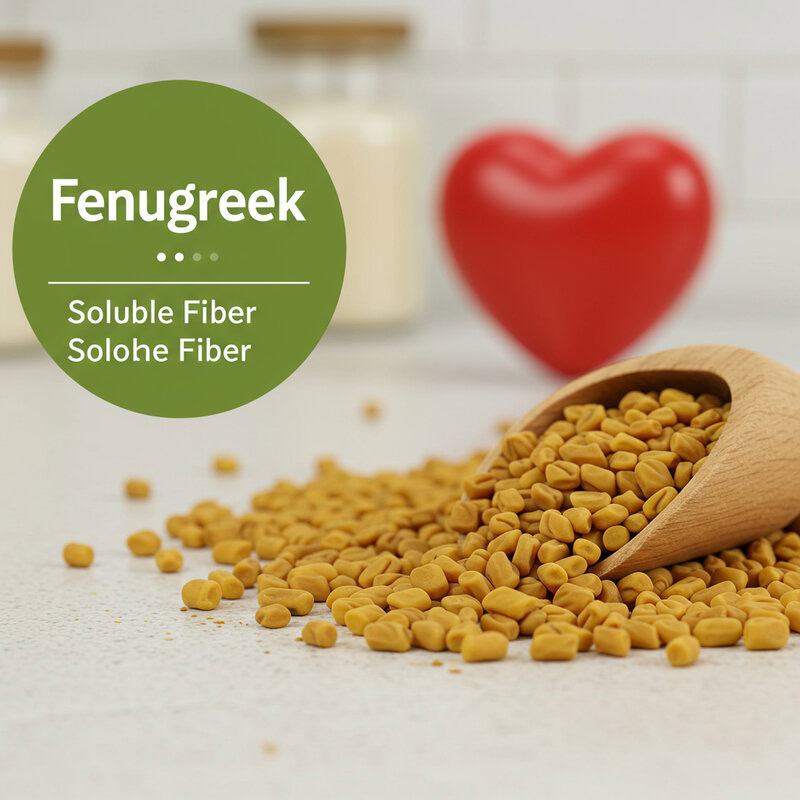
Fenugreek is a lesser-known spice with remarkable cholesterol-lowering properties, thanks to its high content of soluble fiber. This fiber forms a gel-like substance in the digestive tract that binds to cholesterol, helping to excrete it from the body and lower LDL levels. A study in the Journal of the Saudi Heart Association found that regular fenugreek consumption significantly improved cholesterol profiles in participants with high cholesterol.
Fenugreek is an integral part of Middle Eastern and South Asian cuisines. Its seeds and leaves are used to flavor breads, stews, and vegetable dishes, imparting a slightly sweet, nutty taste. The seeds can be soaked, ground, or sprouted to reduce their natural bitterness and enhance digestibility. For a cholesterol-friendly diet, try adding fenugreek seeds to homemade bread, curries, or spice blends. A typical dose is 5-30 grams of seeds daily, but starting with small amounts is best to allow your palate and digestive system to adjust. For more culinary ideas and health information, see the Medical News Today fenugreek guide.
7. Coriander
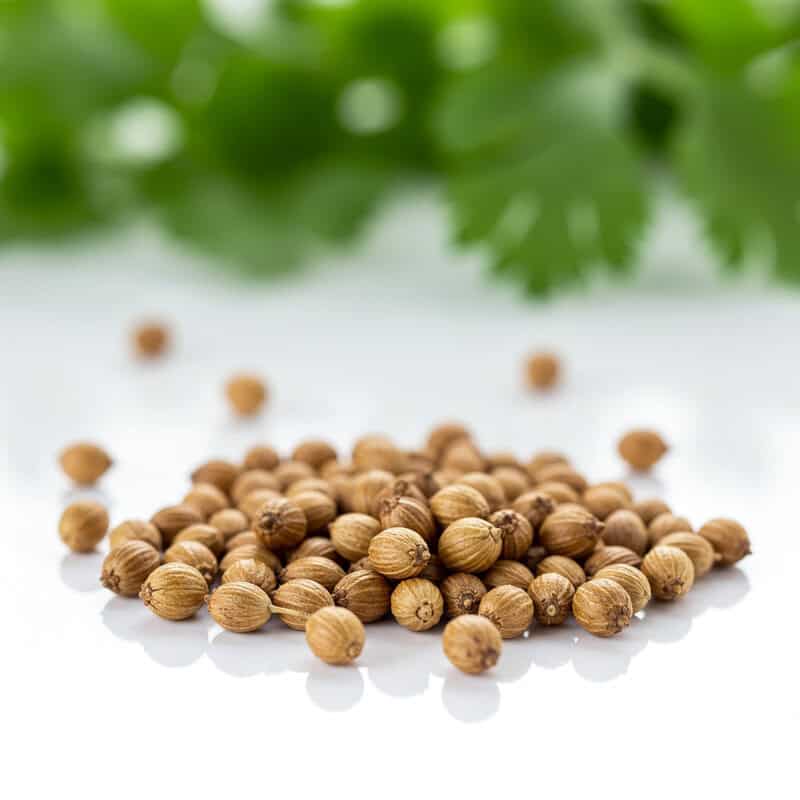
Coriander is a versatile herb and spice, prized for its unique flavor and impressive health benefits, particularly its content of phytosterols. These plant compounds structurally resemble cholesterol and compete for absorption in the digestive tract, effectively reducing overall cholesterol uptake and supporting lower LDL levels. A study in the Journal of Environmental Biology found that coriander seed extracts significantly reduced cholesterol and triglyceride levels in animal studies, highlighting its therapeutic potential.
Coriander is unique in that both its fresh leaves (often called cilantro) and dried seeds are widely used in global cuisines. The fresh leaves add a bright, citrusy note to salsas, guacamole, and salads, while the seeds—either whole or ground—bring warmth and depth to stews, soups, and curries. Incorporating coriander into your meals is simple: sprinkle chopped leaves over finished dishes, or toast and grind the seeds to flavor spice rubs and marinades. Both forms contribute phytosterols and antioxidants for heart health. For more on coriander’s culinary uses and research-backed benefits, visit Healthline’s coriander nutrition guide.
8. Cumin
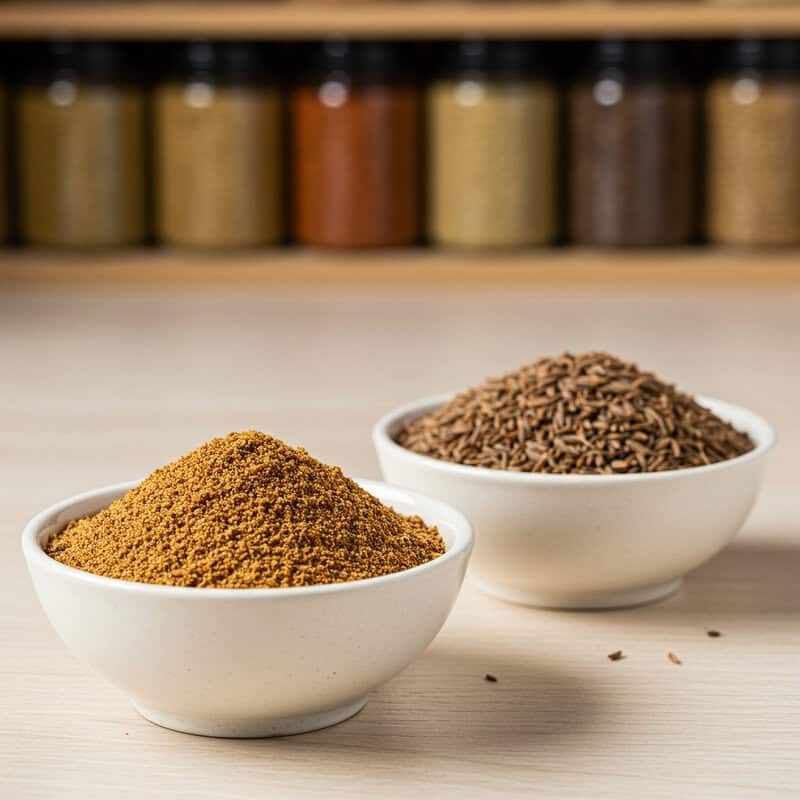
Cumin is a spice renowned for its earthy aroma and robust flavor, but it also holds promise for cholesterol management due to its potent antioxidant properties. Antioxidants in cumin, such as flavonoids and polyphenols, help combat oxidative stress, which is linked to the oxidation of LDL cholesterol—a major factor in the development of atherosclerosis. A clinical trial published in the International Journal of Health Sciences demonstrated that cumin supplementation led to significant reductions in total cholesterol and LDL levels among participants with hyperlipidemia.
Cumin is a staple in Mediterranean, Middle Eastern, and South Asian diets, where it is used to flavor everything from rice dishes to hearty stews. Its warm, slightly bitter taste enhances both vegetarian and meat-based recipes. To incorporate cumin into your cholesterol-friendly diet, try sprinkling ground cumin over roasted vegetables, mixing it into hummus, or adding whole seeds to soups and bread dough for extra texture and flavor. Cumin’s versatility makes it easy to enjoy its health benefits daily. For more information on cumin’s nutritional value and culinary uses, visit Medical News Today’s cumin overview.
9. Oregano
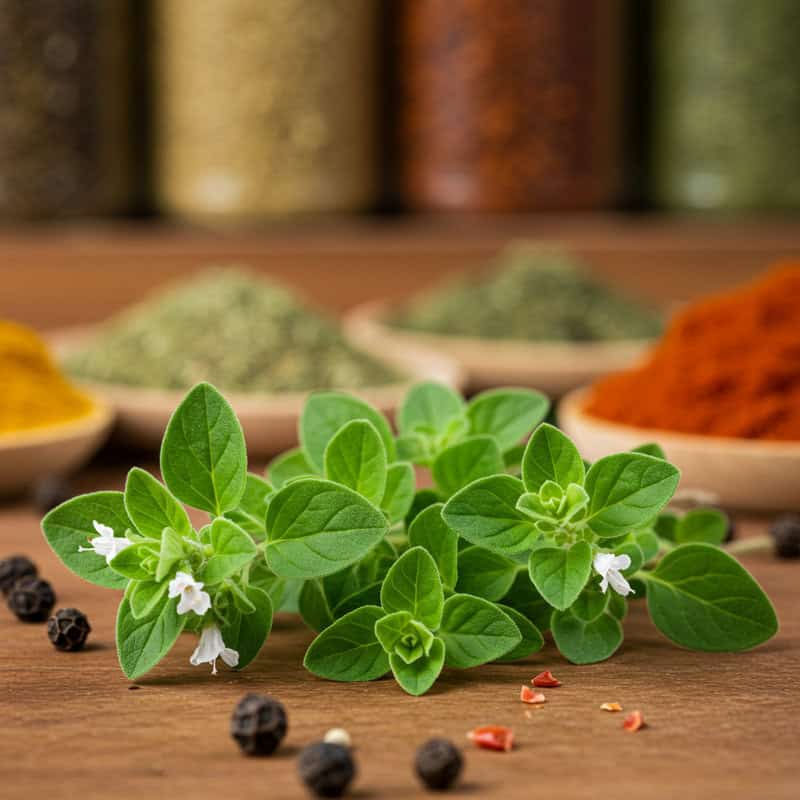
Oregano is a fragrant herb rich in polyphenols, powerful plant compounds known to support heart health by reducing inflammation and protecting blood vessels. These polyphenols, such as rosmarinic acid and thymol, have demonstrated cholesterol-lowering potential by preventing the oxidation of LDL cholesterol, a critical step in the development of cardiovascular disease. A review in the journal Foods highlights how oregano’s antioxidants can positively impact lipid profiles and reduce heart disease risk.
Oregano can be used both fresh and dried, with each form offering distinct flavor and nutritional profiles. Fresh oregano boasts a milder, grassy flavor and is ideal for garnishing salads, grilled vegetables, or poultry. Dried oregano, on the other hand, is more concentrated in flavor and polyphenols, making it a staple in Mediterranean and Italian cuisine. A classic way to incorporate oregano into your diet is by adding it to tomato sauces, soups, and pasta dishes, where its savory notes enhance the overall taste. For more on oregano’s health properties and culinary uses, visit Healthline’s oregano nutrition guide.
10. Rosemary
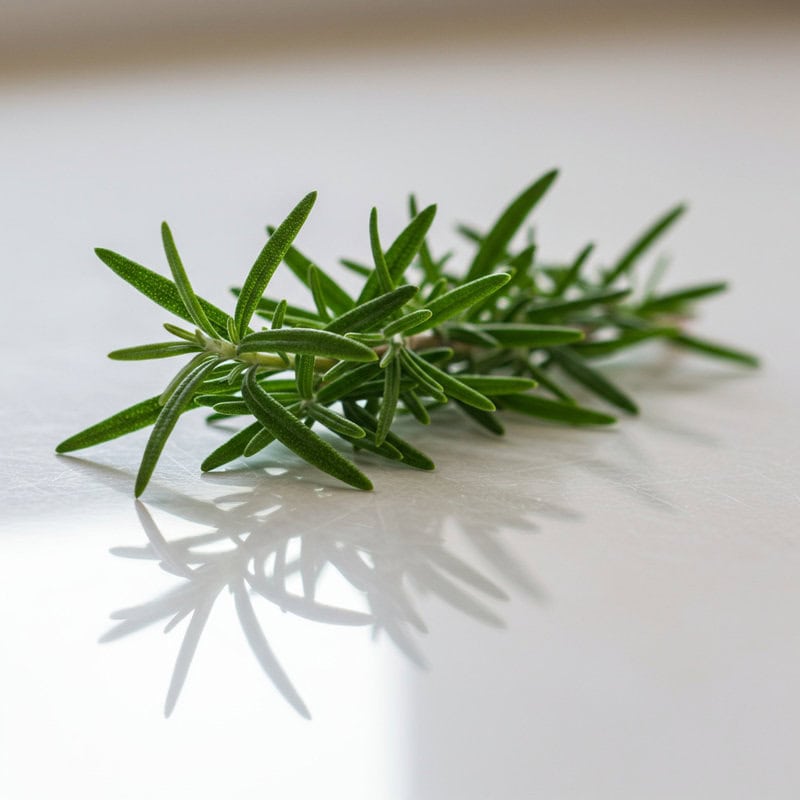
Rosemary is not only cherished for its aromatic, pine-like flavor but also for its rich content of carnosic acid, a potent antioxidant associated with cholesterol-lowering effects. Carnosic acid helps reduce oxidative damage to LDL cholesterol, a key factor in preventing plaque buildup and supporting overall cardiovascular health. Research published in the Journal of Food and Drug Analysis demonstrates how rosemary extract can improve lipid profiles by decreasing total cholesterol and LDL cholesterol while increasing HDL cholesterol.
Rosemary is a hallmark of the Mediterranean diet, often featured in traditional dishes for both its flavor and health-promoting properties. The herb pairs exceptionally well with roasted meats, such as chicken, lamb, or pork, infusing them with a savory, herbal essence. It can also be used to season potatoes and other vegetables; simply chop fresh or dried rosemary and sprinkle it generously before roasting. For an extra boost, add rosemary to olive oil as a marinade or finishing drizzle. To explore more about rosemary’s health benefits and culinary applications, visit Medical News Today’s rosemary guide.
11. Thyme
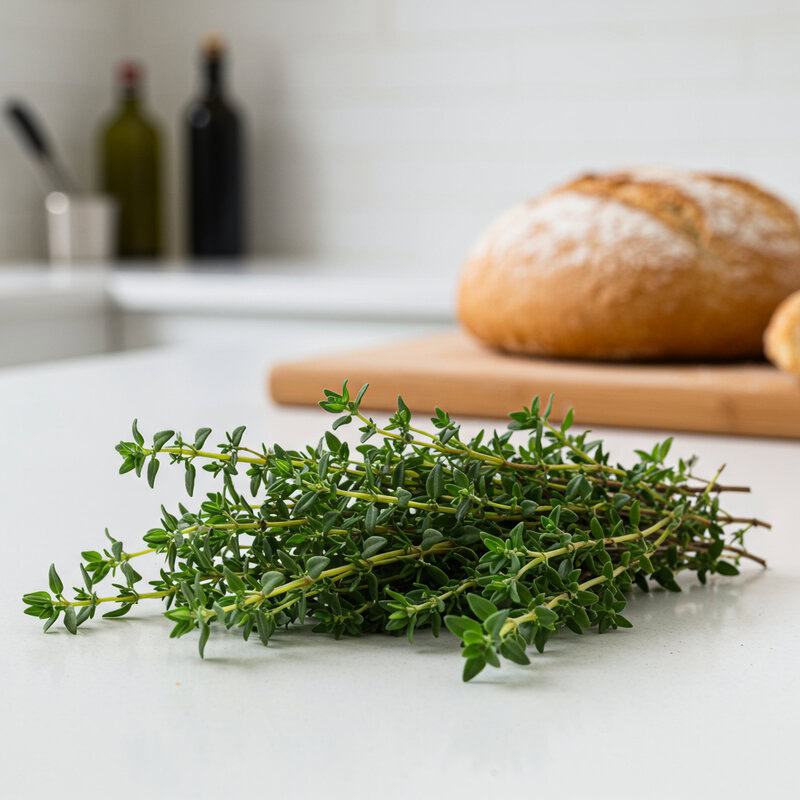
Thyme is a cherished herb in culinary traditions, especially in French cuisine, and is celebrated for its high concentration of thymol, a potent antioxidant. Thymol works by neutralizing free radicals and reducing the oxidation of LDL cholesterol, which in turn supports arterial health and may lower the risk of cardiovascular disease. According to a study published in the Journal of Food Science and Technology, thyme extracts can help improve lipid profiles and reduce markers of oxidative stress.
Thyme’s earthy, slightly minty flavor is a staple in classic French dishes such as ratatouille, coq au vin, and bouquet garni blends. Its versatility makes it equally suitable for seasoning meats, soups, and roasted vegetables. One popular way to enjoy thyme’s benefits is by infusing it in oils: simply add fresh or dried thyme sprigs to olive oil and allow it to steep for several days. The resulting infusion can be drizzled over salads, breads, or grilled foods, imparting both flavor and antioxidant properties. For further details on thyme’s health benefits and culinary uses, see Healthline’s thyme overview.
12. Sage

Sage is a flavorful herb packed with flavonoids, natural compounds known for their antioxidant and anti-inflammatory properties that may help lower cholesterol. Research published in the International Journal of Molecular Sciences has shown that sage supplementation can significantly reduce total and LDL cholesterol while increasing HDL cholesterol. These effects are attributed to sage’s ability to improve lipid metabolism and protect cells from oxidative damage, supporting overall cardiovascular health.
Culinarily, sage is a classic ingredient in stuffing, particularly in holiday roasts, and is often used to flavor pasta dishes, such as the Italian favorite “burro e salvia” (sage butter pasta). Its strong, earthy taste pairs well with poultry, pork, and root vegetables. To enjoy sage’s cholesterol-lowering benefits, try adding fresh or dried leaves to soups, stews, or roasted vegetables, or infuse sage into olive oil for drizzling over meals. A daily intake of 1-2 teaspoons of dried sage, or a small handful of fresh leaves, is considered both safe and effective. For more information on sage’s medicinal and culinary uses, visit Medical News Today’s sage guide.
13. Basil

Basil is an aromatic herb widely celebrated for its culinary versatility and health benefits, particularly its content of eugenol, a bioactive compound known to help regulate lipid levels. Eugenol acts as an antioxidant and may inhibit key enzymes involved in cholesterol synthesis, supporting healthy blood lipid profiles. A study highlighted by the Journal of Advanced Pharmaceutical Technology & Research found that basil extracts can reduce total and LDL cholesterol while raising HDL cholesterol, contributing to cardiovascular protection.
There are several varieties of basil, with sweet basil most commonly used in Italian cuisine, while holy basil (Tulsi) is revered in Ayurvedic medicine for its medicinal properties. Both types are rich in eugenol and other antioxidants, though holy basil is often consumed as tea or supplements. For culinary use, fresh sweet basil can be torn into salads, layered on sandwiches, or blended into classic pesto for pasta and vegetables. To maximize basil’s benefits, add a handful of fresh leaves to your daily meals or infuse them in olive oil. For further reading on basil’s cholesterol-lowering properties and uses, visit Healthline’s basil guide.
14. Cardamom

Cardamom is a fragrant spice rich in antioxidant compounds such as terpenes and flavonoids, which contribute to its cholesterol-lowering effects. These antioxidants help protect against oxidative stress, a process that can lead to the oxidation of LDL cholesterol and the development of arterial plaque. A study published in the Journal of Dietary Supplements found that regular cardamom consumption improved lipid profiles in adults by reducing total cholesterol and LDL cholesterol levels.
Cardamom’s warm, sweet flavor is a staple in traditional Indian teas, such as masala chai, where it is often combined with black tea, ginger, and other spices for a comforting and heart-healthy beverage. Beyond beverages, cardamom pairs beautifully with both sweet and savory dishes. Sprinkle ground cardamom into oatmeal, rice pudding, or smoothies for a subtle, aromatic boost. Whole pods can be added to stews, pilafs, and curries for depth of flavor, or infused in milk for desserts like custards and ice creams. For more ideas on incorporating cardamom into your diet and its health effects, visit Healthline’s cardamom benefits guide.
15. Cloves
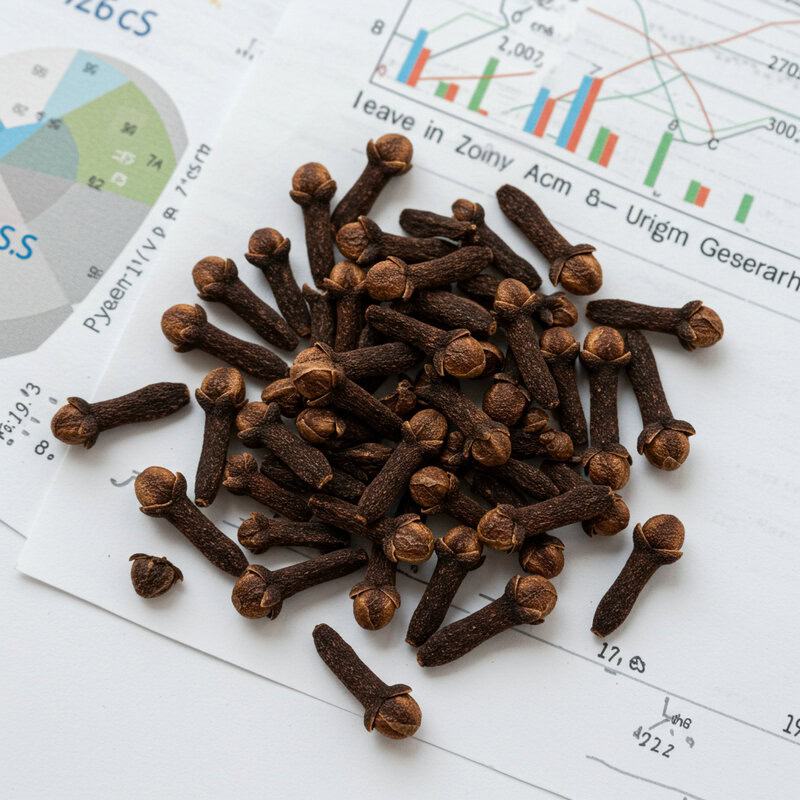
Cloves are aromatic flower buds renowned for their potent health benefits, largely attributed to their high content of eugenol. Eugenol acts as a powerful antioxidant and anti-inflammatory agent, with research suggesting it can help lower total and LDL cholesterol levels. A study published in the Journal of Natural Medicine demonstrated that regular clove supplementation improved lipid profiles and reduced markers of oxidative stress, supporting cardiovascular health.
Cloves are a classic ingredient in holiday recipes, lending their warm, spicy flavor to mulled wine, gingerbread, and baked hams. They are used in both whole and ground forms, each offering unique culinary applications. Whole cloves can be simmered in stews, rice, or hot beverages and then removed before serving, while ground cloves easily blend into spice mixes for desserts, marinades, and sauces. When using ground cloves, a small pinch is often sufficient due to their intense flavor. For convenience and maximum potency, freshly grinding whole cloves is recommended. To learn more about cloves’ health benefits and practical uses, visit Healthline’s cloves guide.
16. Nutmeg

Nutmeg is a warm, aromatic spice containing myristicin, a compound with promising antioxidant and anti-inflammatory properties that may help support healthy cholesterol levels. While research is still emerging, some studies, such as one published in the Annals of Family Medicine, suggest that compounds in nutmeg can positively influence lipid metabolism and potentially lower LDL cholesterol, though more human studies are needed for definitive evidence.
Nutmeg is cherished in both sweet and savory culinary traditions. It adds depth to desserts like custards, rice pudding, and apple pie, and enhances savory dishes such as creamy soups, mashed potatoes, and béchamel sauce. Just a small amount, freshly grated, is enough to bring its distinctive flavor to a recipe. However, it’s important to use nutmeg in moderation. Excessive consumption can lead to adverse effects due to compounds like myristicin and safrole, which in high doses may cause toxicity. Generally, up to 1/2 teaspoon per day is considered safe for most adults. For more on nutmeg’s potential benefits and precautions, visit Healthline’s nutmeg guide.
17. Star Anise

Star anise is a striking, star-shaped spice celebrated for its unique flavor and medicinal properties, particularly its rich content of shikimic acid. Shikimic acid is a potent antioxidant that may help protect the cardiovascular system by reducing inflammation and oxidative stress, both of which are linked to high cholesterol and heart disease. While human research is limited, a review published in the Frontiers in Pharmacology highlights the potential of star anise’s bioactive compounds, including shikimic acid, to support heart health and improve overall lipid profiles.
Star anise is a staple in Asian cuisine, especially in Chinese and Vietnamese cooking, where it flavors broths, soups, and stews such as the famous pho. Its sweet, licorice-like taste also makes it a delightful addition to spice blends and desserts. To harness its potential cholesterol-lowering benefits, try steeping whole star anise pods in herbal teas, simmering them in broths, or adding them to slow-cooked stews for a hint of aromatic spice. For further reading on star anise’s culinary and health properties, visit Healthline’s star anise guide.
18. Mustard Seeds

Mustard seeds are small but mighty when it comes to heart health, thanks in part to their high content of glucosinolates. These natural compounds have been shown to influence cholesterol metabolism by enhancing bile acid excretion and modulating enzymes involved in cholesterol synthesis. Research highlighted in the Journal of Food Science and Technology suggests that regular mustard seed consumption may help lower total and LDL cholesterol while offering antioxidant protection.
Widely used in South Asian and Mediterranean cuisine, mustard seeds add both flavor and texture to a variety of dishes. They are a classic ingredient in pickles, curries, and spice blends, and are often tempered in hot oil to release their nutty aroma before being added to vegetables or lentils. For easy at-home preparation, try toasting mustard seeds to sprinkle over roasted vegetables, or grind them to make a tangy mustard paste for dressings and marinades. Incorporating just a teaspoon a day into your meals can yield both culinary and cardiovascular benefits. For more on mustard seeds’ health advantages and recipe inspiration, visit Medical News Today’s mustard seed guide.
19. Fennel

Fennel is a flavorful and aromatic plant whose seeds and bulb are both celebrated for their culinary and medicinal uses. Its principal active compound, anethole, has demonstrated antioxidant and anti-inflammatory effects that may contribute to lower cholesterol levels. A study featured in the Journal of Food Biochemistry found that fennel extract reduced total and LDL cholesterol in animal models, supporting its role in heart health.
In Mediterranean cuisine, fennel is prized for its crisp texture and subtle licorice flavor, often sliced thinly into salads or served as a refreshing side dish. Both the bulb and seeds offer versatility in the kitchen: the bulb can be roasted to bring out its natural sweetness, while the seeds are commonly used in spice blends, sausages, and herbal teas. To enjoy its cholesterol-lowering benefits, try tossing sliced fennel bulb with olive oil and roasting until tender, or sprinkle crushed fennel seeds over roasted vegetables and fish. For more creative ideas and further information on fennel’s health properties, visit Healthline’s fennel guide.
20. Dill

Dill is an aromatic herb prized for its delicate, feathery leaves and distinctive taste, but it also stands out for its rich flavonoid content. Flavonoids are potent antioxidants that can help lower cholesterol by inhibiting LDL oxidation and improving overall lipid metabolism. Research published in the Iranian Journal of Pharmaceutical Research found that dill extract significantly reduced total cholesterol and LDL cholesterol in individuals with mild hyperlipidemia.
Dill is perhaps best known for its role in pickling, imparting a fresh, tangy flavor to cucumbers and other vegetables. However, its culinary uses extend far beyond the pickle jar. Fresh dill is a classic pairing for fish dishes, especially salmon, due to its light, herbaceous notes that enhance seafood without overpowering it. Sprinkle chopped dill over grilled or baked fish, stir into yogurt-based sauces, or add to potato salads and soups for a burst of flavor and nutrition. Both the leaves and seeds can be used, but fresh dill leaves are especially high in beneficial compounds. For more about dill’s health benefits and creative recipes, visit Healthline’s dill overview.
21. Parsley

Parsley is a vibrant herb celebrated for more than just its fresh, grassy flavor—it’s also packed with antioxidants and vitamin K, both of which contribute to heart health. Antioxidants such as flavonoids and vitamin C in parsley help reduce oxidative stress and inflammation, while vitamin K is essential for healthy blood clotting and may play a role in protecting arteries from calcification. Research noted in the Journal of Traditional and Complementary Medicine suggests that these compounds support lower cholesterol and improved cardiovascular function.
One of the most iconic uses of parsley is in tabbouleh, a traditional Middle Eastern salad abundant in chopped parsley, bulgur wheat, tomatoes, and lemon juice. Beyond this, parsley makes an ideal garnish for a variety of dishes, from grilled meats to soups and pasta, not only enhancing flavor but also adding valuable nutrients. Try sprinkling fresh, chopped parsley over your daily meals or blending it into green smoothies for an easy nutritional boost. Both curly and flat-leaf parsley varieties are beneficial. For more about parsley’s health benefits and recipe inspiration, visit Healthline’s parsley guide.
22. Bay Leaf

Bay leaf, often used whole in cooking, is a source of potent polyphenols that contribute to its cholesterol-lowering and antioxidant properties. These polyphenols help protect against oxidative stress and support healthy cholesterol metabolism, potentially reducing the risk of heart disease. A study published in the Journal of Clinical Biochemistry and Nutrition found that bay leaf supplementation led to improved lipid profiles, including reductions in total and LDL cholesterol.
Bay leaves are a classic ingredient in soups, stews, and braises, lending a subtle, herbal flavor that deepens as dishes simmer. To use bay leaf effectively, simply add one or two whole leaves to your pot at the beginning of cooking, allowing their beneficial compounds to infuse the broth or sauce. Since bay leaves are tough and inedible, remember to remove them before serving. This simple step delivers both taste and health benefits without altering the texture of your meal. For more information on bay leaf’s properties and culinary applications, visit Healthline’s bay leaf guide.
23. Saffron

Saffron is the world’s most precious spice, prized for its deep color, unique flavor, and remarkable health benefits. Its key active compound, crocin, has shown promise in supporting healthy cholesterol levels by acting as a powerful antioxidant and inhibiting cholesterol absorption. According to a review in the Avicenna Journal of Phytomedicine, crocin supplementation helped lower total and LDL cholesterol in animal and preliminary human studies, pointing to saffron’s potential cardiovascular benefits.
Saffron is a hallmark of Mediterranean and Middle Eastern cuisine, especially renowned for its use in Spanish paella, where it imparts a golden hue and rich aroma to rice dishes. Due to its high cost and susceptibility to adulteration, it’s essential to buy authentic saffron threads from reputable sources—look for deep red, unbroken strands rather than ground or powdered forms, which are more easily faked. To use, steep a few threads in warm water before adding to recipes to maximize both color and flavor. For more on saffron’s health effects and culinary uses, visit Healthline’s saffron guide.
24. Marjoram

Marjoram is a fragrant herb closely related to oregano, and it boasts a rich profile of antioxidants such as rosmarinic acid and flavonoids. These compounds help neutralize free radicals, reduce inflammation, and support healthy cholesterol metabolism. Research published in the Journal of Food and Drug Analysis highlights marjoram’s potential to improve lipid profiles and protect heart health due to its antioxidant activity.
While marjoram and oregano share similar flavors, marjoram is milder and sweeter, making it a versatile addition to a variety of dishes. It is particularly popular in Mediterranean and Middle Eastern cuisines, where it is used to season soups, roasted vegetables, and meat dishes. Marjoram shines in salad dressings—simply chop fresh or dried leaves and blend them with olive oil, vinegar, and lemon juice for a heart-healthy boost. It also pairs well with tomato-based sauces and bean salads. Both fresh and dried marjoram offer health benefits, but fresh leaves contain higher levels of antioxidants. For more on marjoram’s nutritional properties and recipe ideas, see Healthline’s marjoram guide.
25. Chives

Chives are a mild, onion-flavored herb that pack a nutritional punch, especially due to their content of saponins. Saponins are phytochemicals shown to support heart health by binding to cholesterol in the digestive tract, thereby reducing its absorption. According to a review in the International Journal of Molecular Sciences, saponins from allium vegetables like chives may help lower LDL cholesterol and support overall cardiovascular well-being.
Chives are perhaps best known for their use as a topping on baked potatoes, where their fresh, grassy flavor adds color and nutrition to the dish. However, their culinary versatility extends far beyond potatoes. Fresh chives can be snipped over scrambled eggs, blended into cream cheese spreads, or stirred into soups, salads, and sauces just before serving to preserve their delicate flavor and nutrients. They also make an excellent garnish for grilled fish or chicken. Chives are best used fresh, as cooking can diminish their flavor and beneficial compounds. For further information on the health benefits and uses of chives, visit Healthline’s chives nutrition guide.
26. Tarragon

Tarragon is an aromatic herb favored in French cuisine, celebrated for its content of phenolic acids such as caffeic and chlorogenic acid. These compounds are potent antioxidants that may help lower cholesterol by reducing oxidative stress and improving lipid metabolism. Research highlighted in the Journal of Food Biochemistry suggests that phenolic acids in herbs like tarragon can positively influence cardiovascular risk factors, including cholesterol levels, when consumed regularly as part of a balanced diet.
Tarragon’s slightly bittersweet, anise-like flavor makes it a staple in classic French sauces, such as Béarnaise and tarragon-infused vinaigrettes. It pairs beautifully with chicken, fish, eggs, and fresh vegetables, adding a sophisticated herbal note to dishes. To incorporate tarragon into your diet, use 1-2 teaspoons of fresh, chopped leaves or 1/2 teaspoon of dried tarragon per meal. Because its flavor can be overpowering if overused, start with small amounts and adjust to taste. Add fresh tarragon at the end of cooking to preserve its delicate aroma and health benefits. For more on tarragon’s nutritional properties and recipe inspiration, see Healthline’s tarragon guide.
27. Paprika
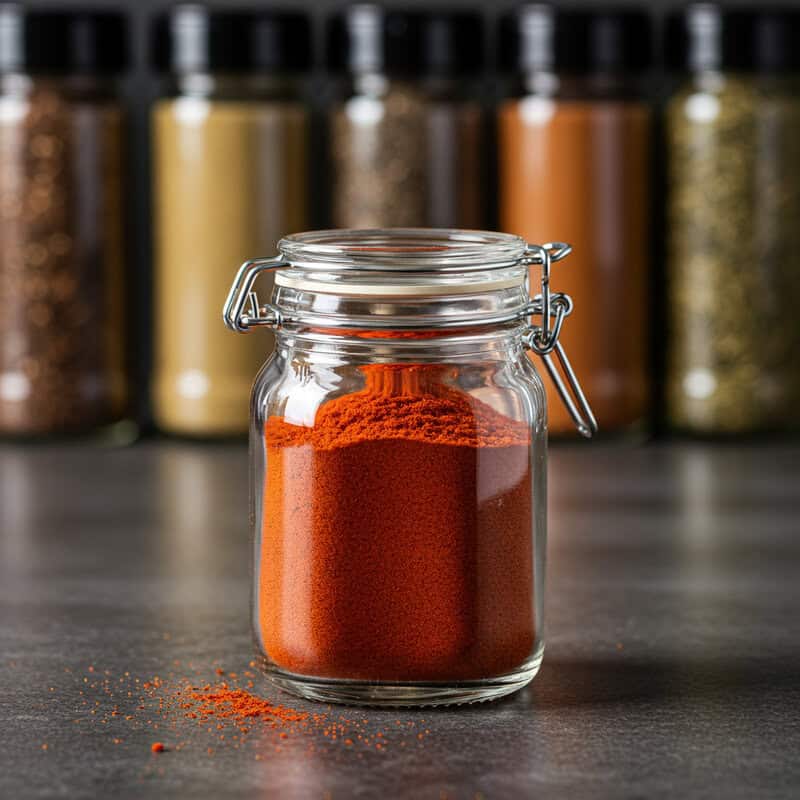
Paprika is a colorful spice made from ground peppers, celebrated for its vibrant hue and rich flavor. Its key active compound, capsaicin, is well-known for its ability to boost metabolism and promote heart health. Capsaicin has been shown to positively affect lipid metabolism by reducing cholesterol absorption and stimulating the breakdown of fats. According to a review in the International Journal of Molecular Sciences, regular consumption of capsaicin-containing spices like paprika can lower LDL cholesterol and support better cardiovascular outcomes.
Paprika is a signature ingredient in Hungarian cuisine, imparting deep flavor and color to dishes such as goulash, chicken paprikash, and stews. There are several varieties, including sweet, hot, and smoked paprika, each offering a unique taste profile. Smoked paprika, in particular, adds a subtle, smoky depth to roasted vegetables, meats, and even hummus. To incorporate paprika into your diet, simply sprinkle it over eggs, potato dishes, or grilled proteins, or stir into soups and sauces for added color and nutrition. For more information on paprika’s health benefits and uses, visit Healthline’s paprika guide.
28. Chili Powder
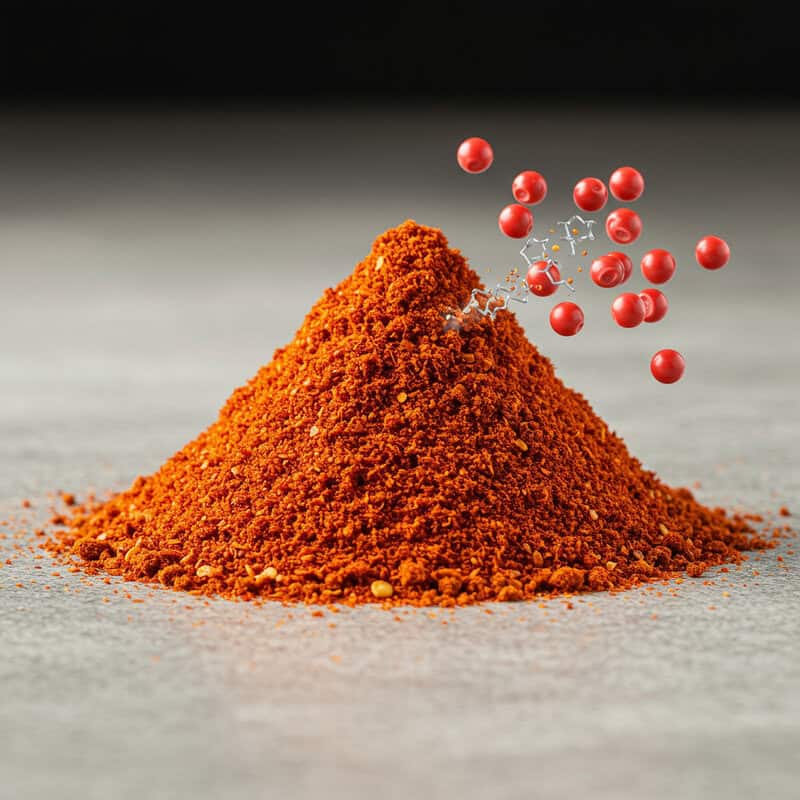
Chili powder is a bold spice blend known for its heat and vibrant flavor, largely attributed to its key active component, capsaicin. Capsaicin has been shown to have cholesterol-lowering properties by reducing the absorption of dietary cholesterol and promoting the breakdown of fats within the body. A study published in the Critical Reviews in Food Science and Nutrition highlights capsaicin’s positive effect on lipid profiles, including reductions in LDL cholesterol and triglycerides.
Chili powder varies widely in heat depending on the types of peppers used, ranging from mild blends to fiery hot varieties. Choosing the right level of spiciness allows you to enjoy the benefits of capsaicin while suiting your personal taste and tolerance. For those with sensitive stomachs or digestive concerns, it’s best to use chili powder in moderation, as it can cause irritation if consumed in excess. Add chili powder to soups, stews, marinades, or sprinkle on roasted vegetables and meats for a warming kick. For more details on chili powder’s health effects and culinary uses, visit Healthline’s chili pepper guide.
29. Curry Powder
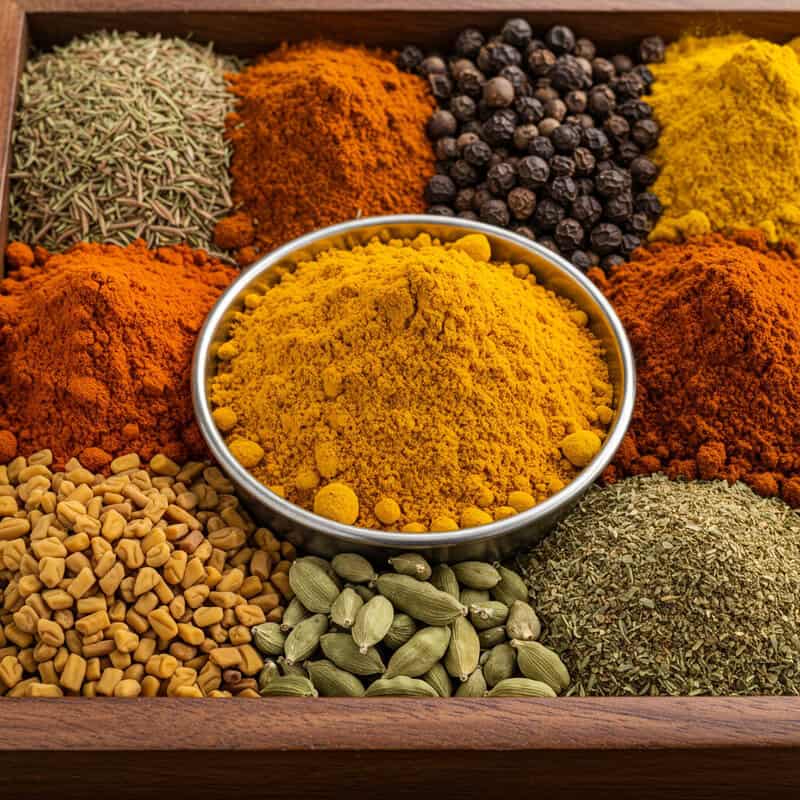
Curry powder is a robust spice blend that brings together a variety of health-promoting ingredients, each contributing to its cholesterol-lowering potential. Common components include turmeric (rich in curcumin), cumin, coriander, fenugreek, and black pepper. These spices work in synergy, amplifying their individual effects on lipid metabolism and antioxidant protection. For example, piperine in black pepper increases the absorption of curcumin from turmeric, while fenugreek delivers soluble fiber to aid cholesterol excretion. A review in the journal Foods highlights the combined benefits of these spices for supporting heart health.
Curry powder is a cornerstone of South Asian cuisine, lending complex flavor and color to dishes such as curries, dals, and rice. Its versatility allows for creative use beyond traditional recipes—try mixing curry powder into soups, salad dressings, or marinades for meats and vegetables. For a homemade blend, combine ground turmeric, cumin, coriander, fenugreek, and a pinch of black pepper to customize both heat and flavor. For more on curry powder’s nutritional benefits and recipe inspiration, visit Healthline’s curry powder guide.
30. Allspice

Allspice is a unique spice derived from the dried berries of the Pimenta dioica plant, featuring a flavor reminiscent of cloves, cinnamon, and nutmeg. Its primary active compound, eugenol, is a potent antioxidant and anti-inflammatory agent that may help lower cholesterol and protect cardiovascular health. Research published in the Journal of Pharmacy & Bioallied Sciences highlights eugenol’s ability to reduce oxidative stress and inflammation, two major contributors to elevated cholesterol and heart disease.
Allspice is a key ingredient in Caribbean cuisine, especially in the famous Jamaican jerk seasoning, where it imparts warmth and depth to meats and vegetables. Its aromatic profile also makes it a popular addition to stews, soups, and marinades. To incorporate allspice into your diet, add ground allspice to hearty stews, chili, or braised dishes for a subtle, spicy note. You can also use whole allspice berries in pickling or simmering liquids for soups and sauces, removing them before serving. For further information on allspice’s health benefits and recipe ideas, visit Healthline’s allspice nutrition guide.
31. Sumac
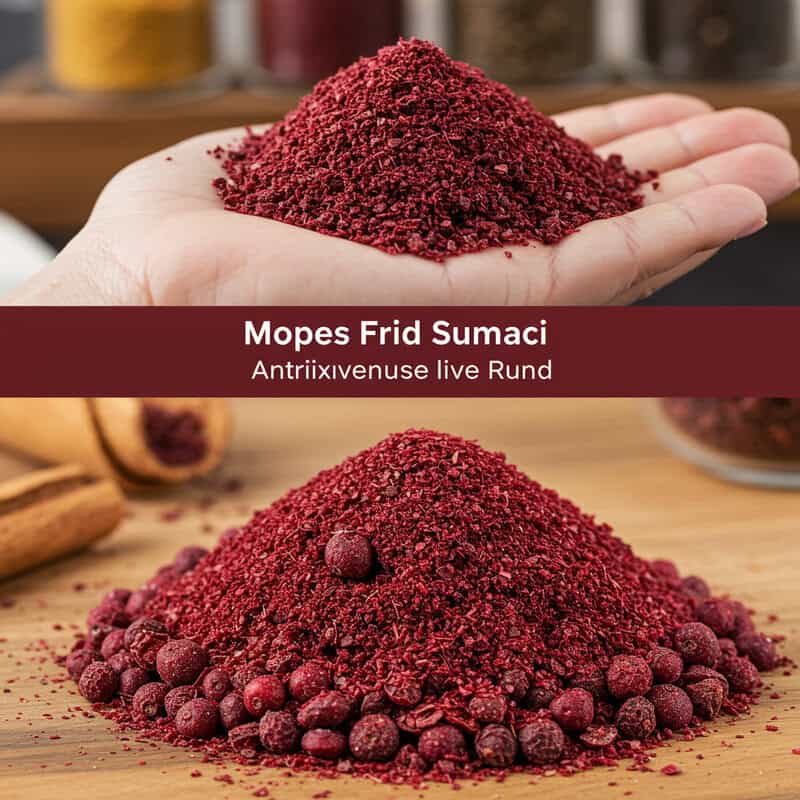
Sumac is a tangy, deep-red spice derived from the dried berries of the Rhus plant, prized for its exceptionally high antioxidant content. These antioxidants, particularly polyphenols and flavonoids, help protect blood vessels from oxidative damage and may support lower cholesterol by reducing LDL oxidation. A review published in the Journal of Food Quality highlights sumac’s potent antioxidant capacity and its potential role in improving lipid profiles.
Sumac is a staple in Middle Eastern cuisine, commonly sprinkled over salads such as fattoush, grilled meats, or roasted vegetables to add a tart, lemony flavor. Its versatility also allows it to be incorporated into marinades, dressings, and dips like hummus. For daily inclusion, try adding a teaspoon of ground sumac to salads, eggs, or as a finishing touch to soups and grain bowls. Its vibrant color and tangy taste make it a flavorful and healthful addition to a variety of dishes. For more details on sumac’s nutritional properties and creative uses, visit Healthline’s sumac guide.
32. Asafoetida

Asafoetida, often known as “hing,” is a pungent spice derived from the resin of Ferula plants and widely used in Indian cuisine. It contains bioactive compounds such as ferulic acid and umbelliferone, which have demonstrated potential for lipid control and cardiovascular support. Studies, including one in the Journal of Advanced Pharmaceutical Technology & Research, suggest that asafoetida can help lower total and LDL cholesterol by modulating enzymes involved in cholesterol metabolism and providing antioxidant protection.
Asafoetida is a cornerstone ingredient in many Indian lentil dishes, such as dal and sambar, where it imparts a savory, umami-like depth once cooked. It is typically used in tiny amounts—just a pinch is enough—often sautéed in oil at the start of cooking to mellow its strong aroma and enhance its health benefits. Due to its potent smell, asafoetida should be stored in an airtight container in a cool, dark place to prevent its scent from permeating other foods. For further information on asafoetida’s medicinal properties and culinary uses, visit Healthline’s asafoetida guide.
33. Szechuan Pepper
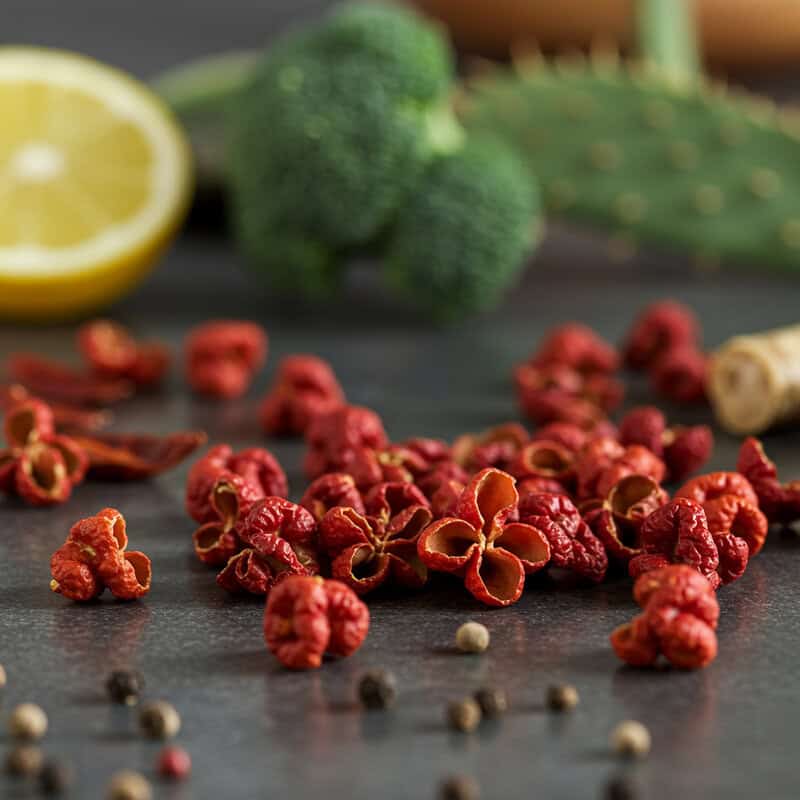
Szechuan pepper, a key ingredient in the bold and spicy dishes of Szechuan cuisine, is not actually a true pepper but the dried husk of the prickly ash shrub. Its unique tingling sensation comes from hydroxy-alpha-sanshool, a bioactive compound that research suggests may support heart health by exerting antioxidant effects and modulating lipid metabolism. A study published in the Molecules journal highlights the cholesterol-lowering potential of hydroxy-alpha-sanshool, which may help reduce total and LDL cholesterol while protecting blood vessels from oxidative stress.
Szechuan peppercorns are essential in classic Chinese dishes such as mapo tofu, kung pao chicken, and spicy hotpots, where they deliver a signature numbing heat and citrusy aroma. To enjoy their benefits and distinctive flavor, lightly toast Szechuan peppercorns before grinding and adding them to stir-fries, noodle dishes, or marinades. They pair especially well with garlic, ginger, soy sauce, and chili oil, balancing rich and spicy flavors. Start with small amounts to avoid overpowering your dish and allow the unique sensation to shine. For more on Szechuan pepper’s culinary uses and health research, visit Healthline’s Szechuan peppercorns guide.
34. White Pepper
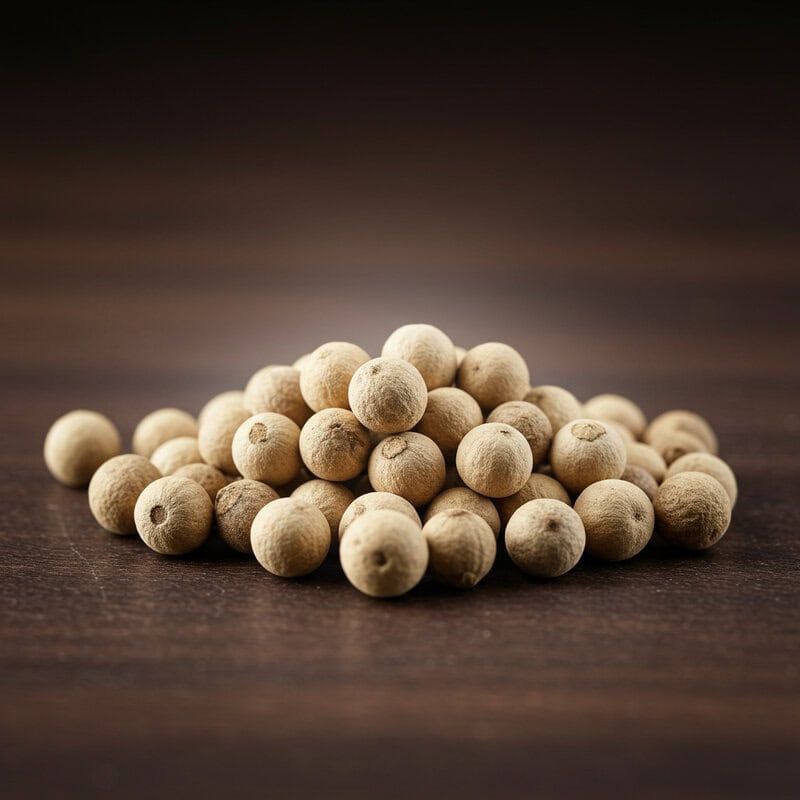
White pepper is derived from the same plant as black pepper but is made by removing the outer layer of the peppercorn, resulting in a milder flavor and pale color. Its key bioactive compound, piperine, is well-documented for its cholesterol-lowering effects and antioxidant properties. Piperine supports healthy lipid metabolism, reduces cholesterol absorption, and may help lower total and LDL cholesterol. According to a study in the Critical Reviews in Food Science and Nutrition, piperine also enhances the bioavailability of other beneficial plant compounds, further amplifying heart health benefits.
While black pepper is known for its pungent heat and robust flavor, white pepper is subtler, making it a preferred choice in dishes where a milder taste or lighter appearance is desired. It’s commonly used in creamy soups, mashed potatoes, white sauces, and light-colored stir-fries to avoid black flecks and maintain an elegant presentation. White pepper can be used freshly ground or whole, depending on the recipe. To maximize its benefits, add it toward the end of cooking. For more details on the health impacts and culinary applications of white pepper, visit Healthline’s white pepper guide.
35. Pink Peppercorn

Pink peppercorn comes from the berries of the Schinus molle or Schinus terebinthifolia trees, and while not a true pepper, it is prized for its mild, subtly sweet, and slightly peppery flavor. Pink peppercorns are rich in unique antioxidants such as anthocyanins and polyphenols, which help protect the cardiovascular system by reducing oxidative stress and inflammation. According to a study published in the Molecules journal, these antioxidant compounds may contribute to improved lipid profiles and support healthy cholesterol levels.
Pink peppercorns are increasingly popular in gourmet cuisine, where their vibrant color and delicate flavor enhance both appearance and taste. They are often used as a finishing spice for seafood, poultry, fresh cheeses, and salads. For a burst of color and mild heat, crush pink peppercorns and sprinkle them over goat cheese, avocado toast, or seared fish. Their subtle flavor also complements creamy sauces and vinaigrettes. Because pink peppercorns are more fragile than black or white varieties, add them at the end of cooking to preserve their aroma and color. For more on pink peppercorns’ health benefits and creative serving ideas, visit Healthline’s pink peppercorn guide.
36. Mace

Mace is the lacy, red outer covering of the nutmeg seed and shares many of its health-promoting compounds, most notably myristicin. Myristicin possesses antioxidant and anti-inflammatory properties that may contribute to improved cholesterol metabolism and cardiovascular health. According to research highlighted in the Annals of Family Medicine, myristicin and related compounds found in mace can help lower LDL cholesterol and support overall heart function by reducing oxidative stress in the body.
While mace and nutmeg come from the same plant, mace offers a more delicate, floral, and slightly spicier flavor compared to the warm, sweet notes of nutmeg. This makes mace a versatile spice for both sweet and savory dishes. In sweet recipes, it can be added to cakes, custards, doughnuts, and fruit compotes for a subtle aromatic lift. For savory dishes, sprinkle ground mace into creamy soups, mashed potatoes, meat rubs, and rice pilafs, or use it to flavor sauces and curries. Mace is typically used in small amounts due to its potent flavor. For more on mace’s health benefits and recipe inspiration, visit Healthline’s mace guide.
37. Wasabi

Wasabi is a pungent green condiment famous for its sharp heat and association with Japanese cuisine, particularly sushi. Its health-promoting action stems from isothiocyanates, bioactive compounds known for their antioxidant and anti-inflammatory properties. Research discussed in the Journal of Functional Foods indicates that isothiocyanates may help lower cholesterol by inhibiting cholesterol synthesis and reducing oxidative stress in blood vessels, thus supporting cardiovascular health.
Wasabi is a traditional accompaniment to sushi, sashimi, and soba noodles, valued for its ability to complement the delicate flavors of raw fish and enhance overall dining experience. However, most wasabi served outside Japan is actually imitation wasabi, typically made from horseradish, mustard, and green food coloring, as true wasabi (Wasabia japonica) is rare and expensive. Authentic wasabi has a more complex, floral heat and is less harsh than its imitation counterpart. For genuine health benefits and a true culinary experience, seek out real wasabi root, which can be freshly grated at the table. For more on wasabi’s cholesterol benefits and culinary distinctions, visit Healthline’s wasabi guide.
38. Horseradish

Horseradish is a pungent root vegetable celebrated for its sharp heat and health benefits, particularly its rich concentration of glucosinolates. These sulfur-containing compounds are known for their cholesterol-lowering and detoxifying properties. Glucosinolates are converted into isothiocyanates when the root is grated or crushed, and studies such as one in the Molecules journal suggest these compounds can help support healthy cholesterol metabolism and reduce oxidative stress, contributing to improved cardiovascular health.
Horseradish is a classic ingredient in European cuisine, often prepared as a creamy horseradish sauce to accompany roast beef, smoked fish, or boiled potatoes. Its robust flavor also makes it a spicy addition to salad dressings, deviled eggs, and vegetable dips. For the best flavor and maximum health benefits, grate fresh horseradish root just before use and mix with vinegar or lemon juice to stabilize its pungency. Prepared horseradish can also be found jarred, but making it fresh offers a sharper taste and higher concentration of active compounds. For more on horseradish’s cholesterol benefits and preparation tips, visit Healthline’s horseradish guide.
39. Turmeric Leaves

Turmeric leaves are less commonly used than the root but offer unique health benefits due to their high concentration of polyphenols and other antioxidant compounds. These polyphenols help reduce oxidative stress and may support healthy cholesterol levels by inhibiting LDL oxidation and improving lipid metabolism. Research in the journal Foods highlights the antioxidant profile of turmeric leaves and their potential to protect against cardiovascular disease.
In Southeast Asian cooking, turmeric leaves are prized for their aromatic, slightly citrusy flavor, which infuses dishes with a subtle yet distinctive taste. They are traditionally used to wrap fish, rice, or sticky rice desserts, where the leaves impart their fragrance during steaming or grilling. To enjoy turmeric leaves at home, try wrapping marinated fish fillets, chicken, or tofu before baking or steaming, or layer them in rice dishes for added aroma and nutrition. Always remove the tough leaves before serving, as they are not typically eaten. For more on turmeric leaves’ health benefits and culinary uses, see Healthline’s turmeric overview.
40. Ajwain
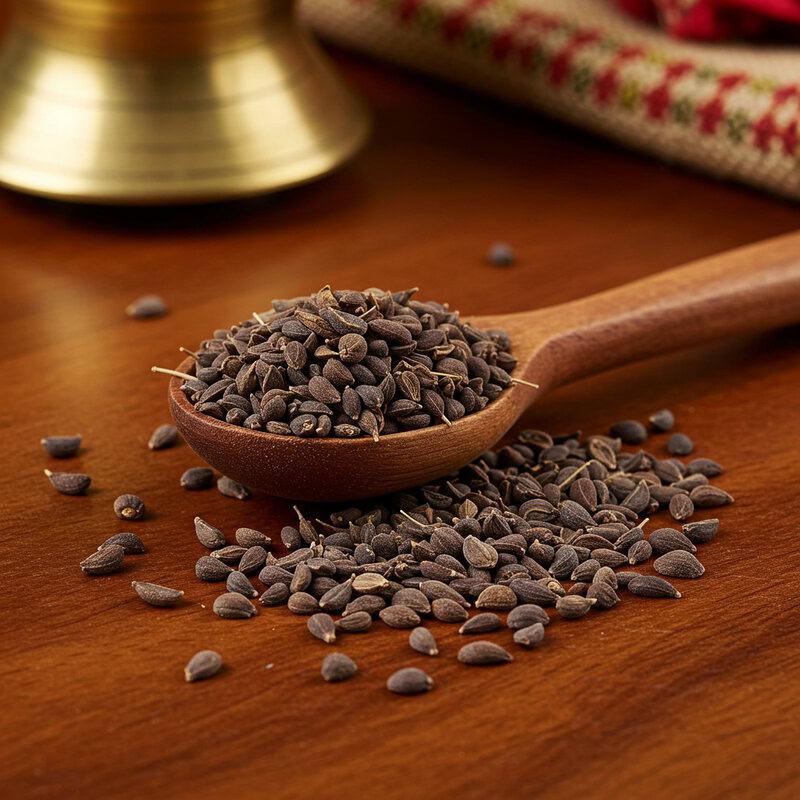
Ajwain, also known as carom seeds, is a pungent spice commonly used in Indian cuisine. Its primary active compound, thymol, is known for both digestive and cholesterol-lowering properties. Thymol acts as an antioxidant and may help modulate lipid metabolism, supporting reductions in total and LDL cholesterol levels. According to a study published in the Journal of Advanced Pharmaceutical Technology & Research, ajwain extracts demonstrated significant lipid-lowering effects in experimental models, highlighting its potential as a dietary aid for cardiovascular health.
Ajwain seeds are especially popular in Indian breads such as paratha and naan, where their aromatic, slightly bitter flavor adds depth and aids digestion. The seeds can also be sprinkled onto savory pastries, mixed into lentil dishes, or used in spice blends for curries and vegetable stir-fries. For cholesterol support, a typical dose ranges from 1/4 to 1/2 teaspoon of seeds per day, either cooked into meals or chewed after eating as a digestive aid. As with all potent spices, start with small amounts to assess tolerance. For more on ajwain’s health benefits and culinary uses, visit Healthline’s ajwain guide.
41. Nigella Seeds
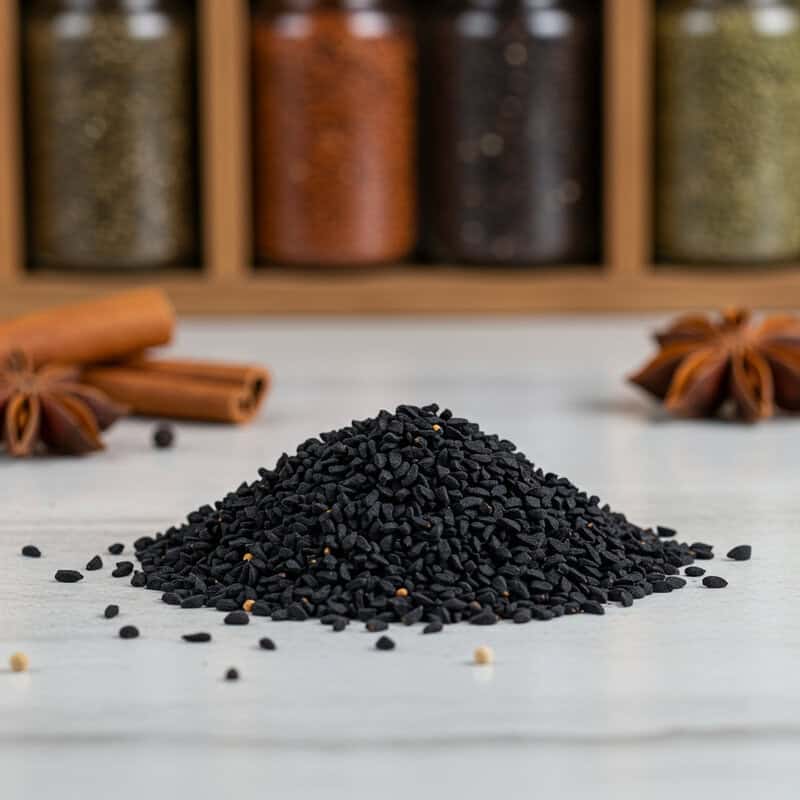
Nigella seeds, also known as black cumin or kalonji, are tiny black seeds prized for their health-promoting properties, largely due to the presence of thymoquinone. Thymoquinone is a potent antioxidant and anti-inflammatory compound that has been shown to help lower total and LDL cholesterol, improve HDL levels, and protect against oxidative stress. Research published in the Avicenna Journal of Phytomedicine highlights the cholesterol-lowering and cardioprotective effects of nigella seed supplementation in both animal and human studies.
Nigella seeds are widely used in Middle Eastern, South Asian, and North African cuisines. They are a signature topping for naan bread, adding a crunchy texture and a slightly bitter, peppery flavor. The seeds can also be sprinkled over salads, mixed into yogurt, or added to spice blends for curries and pickles. To incorporate nigella seeds into your daily routine, try topping roasted vegetables or avocado toast with a pinch, or stirring them into soups and stews. A typical serving is about 1/2 to 1 teaspoon per day. For more on nigella seeds’ health benefits and culinary inspiration, visit Healthline’s nigella seeds guide.
42. Caraway
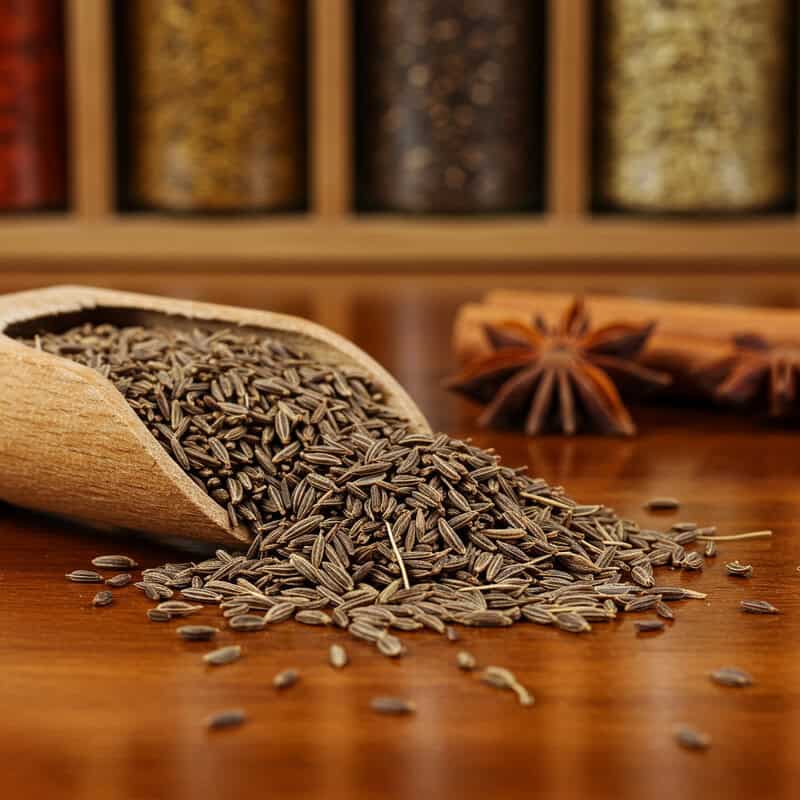
Caraway seeds are renowned for their distinctive, anise-like flavor and their rich content of volatile oils, particularly carvone and limonene. These oils not only contribute to caraway’s unique aroma but also possess antioxidant and anti-inflammatory properties that may help lower cholesterol and support heart health. Research in the Journal of Food Science and Technology has shown that caraway extract can improve lipid profiles by reducing total and LDL cholesterol in animal studies, suggesting similar potential benefits for humans.
Caraway seeds play a prominent role in European baking, most famously as a key flavor in traditional rye bread, where they add both taste and digestive benefits. Beyond bread, caraway is a wonderful addition to roasted vegetables, potatoes, and cabbage dishes, providing a warm, earthy undertone. Try sprinkling whole or lightly crushed caraway seeds over carrots, parsnips, or root vegetable medleys before roasting, or add them to stews and soups for an aromatic boost. Caraway also pairs well in sauerkraut and pickling mixes. For more on caraway’s nutritional properties and creative culinary uses, visit Healthline’s caraway seeds guide.
43. Lovage

Lovage is an aromatic herb with a flavor reminiscent of celery and parsley, and it is especially valued for its high content of quercetin. Quercetin is a powerful flavonoid antioxidant that has been shown to support healthy cholesterol levels by inhibiting LDL oxidation, reducing inflammation, and improving overall lipid profiles. Research published in the Nutrients journal highlights quercetin’s cholesterol-lowering and cardioprotective effects, making lovage a beneficial addition to a heart-healthy diet.
Lovage is widely used in Central European cuisine, where its leaves, stems, and seeds add a savory note to broths and soups. It is a traditional ingredient in hearty potato and vegetable soups, as well as in stocks and stews that benefit from its bold, herbaceous aroma. To enjoy lovage’s cholesterol-lowering benefits, add fresh or dried leaves to homemade stocks, simmering soups, or even chopped into salads and dressings. The robust flavor means a little goes a long way. For more about lovage’s nutritional value and culinary possibilities, visit Healthline’s lovage guide.
44. Celery Seed

Celery seed is a tiny but potent spice renowned for its distinctive flavor and impressive health properties, largely due to the compound apigenin. Apigenin is a flavonoid with antioxidant and anti-inflammatory effects that may help lower cholesterol by improving lipid metabolism and protecting blood vessels from oxidative damage. A study published in the Journal of Food Science and Technology suggests that apigenin supplementation can reduce total and LDL cholesterol, contributing to better cardiovascular health.
Celery seed is a classic addition to coleslaw, potato salad, and pickling blends, where its earthy, slightly bitter taste adds depth and freshness. The seeds can be used whole or ground, and they pair particularly well with creamy dressings and tangy vinegars. For easy inclusion in your diet, sprinkle a pinch of celery seed over salads, roasted vegetables, or into homemade bread dough. You can also add it to soups, stews, and spice rubs for meats. Because of its concentrated flavor, start with small amounts and adjust to taste. For more information on celery seed’s health benefits and creative culinary uses, visit Healthline’s celery seed guide.
45. Anise Seed
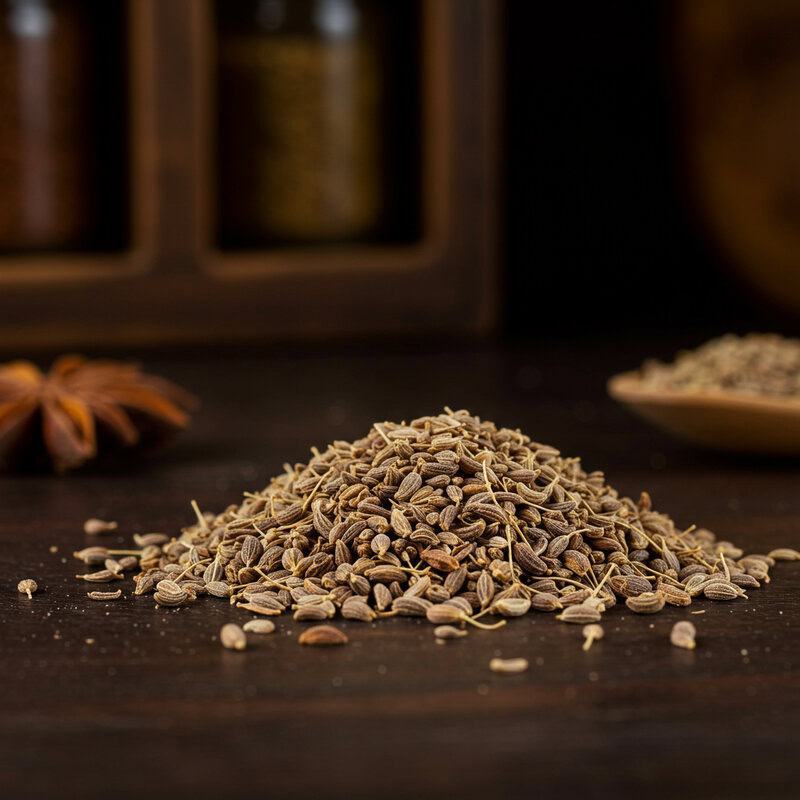
Anise seed is a small, aromatic spice celebrated for its sweet, licorice-like flavor, which comes from its primary compound, anethole. Anethole is a potent antioxidant and anti-inflammatory agent that has been shown to help lower cholesterol by reducing lipid peroxidation and supporting healthy lipid profiles. Research highlighted in the Journal of Food Biochemistry suggests that anise seed extracts can decrease total and LDL cholesterol levels, making this spice a valuable addition to a heart-healthy diet.
Anise seed’s unique licorice flavor is popular in both sweet and savory dishes around the world. It is a classic ingredient in baked goods such as biscotti, breads, and cookies, as well as in spice blends for sausages and stews. The seeds can be used whole or ground, adding a sweet, aromatic note to cakes and pastries. For a simple way to enjoy anise’s benefits, try adding a pinch to oatmeal, granola, or tea. Its flavor is strong, so a little goes a long way. For more about anise seed’s health effects and culinary inspiration, visit Healthline’s anise seed guide.
46. Ginger Leaf
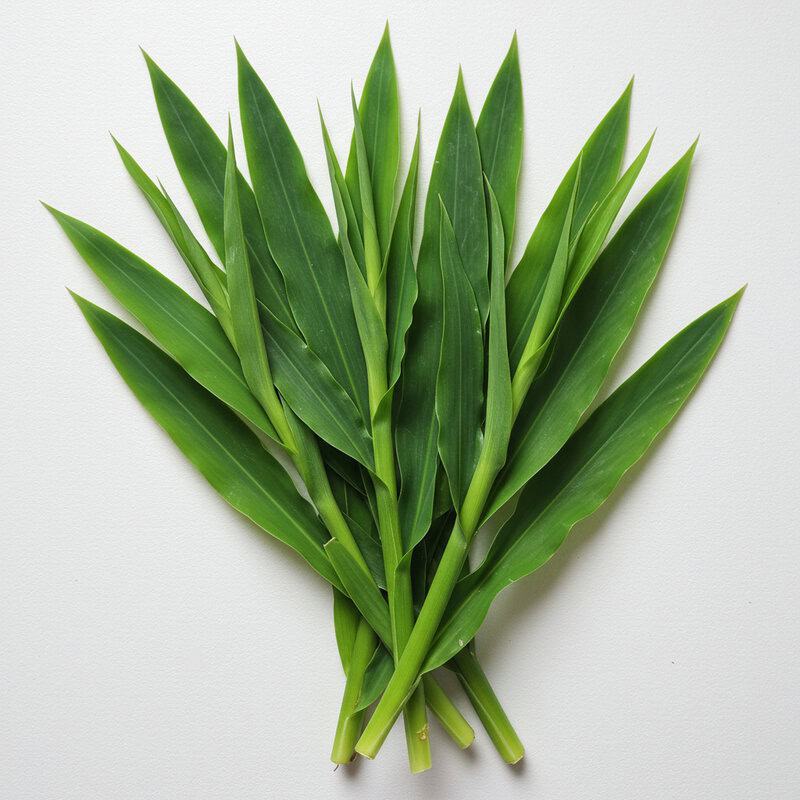
Ginger leaf, though less commonly used than ginger root, is a flavorful and aromatic herb rich in unique polyphenols that contribute to its health-promoting properties. These polyphenols act as antioxidants, helping to reduce oxidative stress and support healthy cholesterol levels by inhibiting LDL oxidation and enhancing lipid metabolism. According to research highlighted in the Journal of Nutrition & Metabolism, ginger’s antioxidant compounds, including those found in its leaves, may offer significant cardiovascular protection.
Ginger leaves are frequently used in various Asian cuisines, particularly in Southeast Asia, where they are valued for their subtle citrusy and spicy aroma. The leaves are often used as natural food wraps for steaming rice, fish, or chicken, infusing the dish with a delicate ginger fragrance. You can also chop fresh ginger leaves and add them to salads, soups, or stir-fries for a unique flavor twist. When using ginger leaves, select fresh, unblemished leaves and rinse them well before use. They can be stored wrapped in a damp paper towel in the refrigerator. For more information on ginger and its edible parts, visit Healthline’s ginger guide.
47. Curry Leaves

Curry leaves are aromatic foliage widely used in South Indian cuisine, cherished not only for their unique flavor but also for their health benefits. The compound mahanimbine found in curry leaves has been studied for its remarkable cholesterol-lowering properties. Research published in the Journal of Lipids demonstrates that mahanimbine can significantly reduce total and LDL cholesterol, while increasing HDL cholesterol, by modulating lipid metabolism and providing antioxidant protection to cardiovascular tissues.
In South Indian curries, curry leaves are often sautéed in oil at the start of cooking, releasing their fragrant citrusy aroma and infusing dishes like sambar, rasam, and vegetable stir-fries with exceptional flavor. Sautéing also enhances the bioavailability of the leaves’ beneficial compounds. To incorporate curry leaves into your diet, add a handful of fresh or dried leaves to hot oil before adding other spices and ingredients. They can also be used as a garnish in dals and rice dishes. For optimal freshness, store curry leaves in the refrigerator wrapped in a paper towel. For more on curry leaves’ health properties and culinary uses, visit Healthline’s curry leaves guide.
48. Poppy Seed
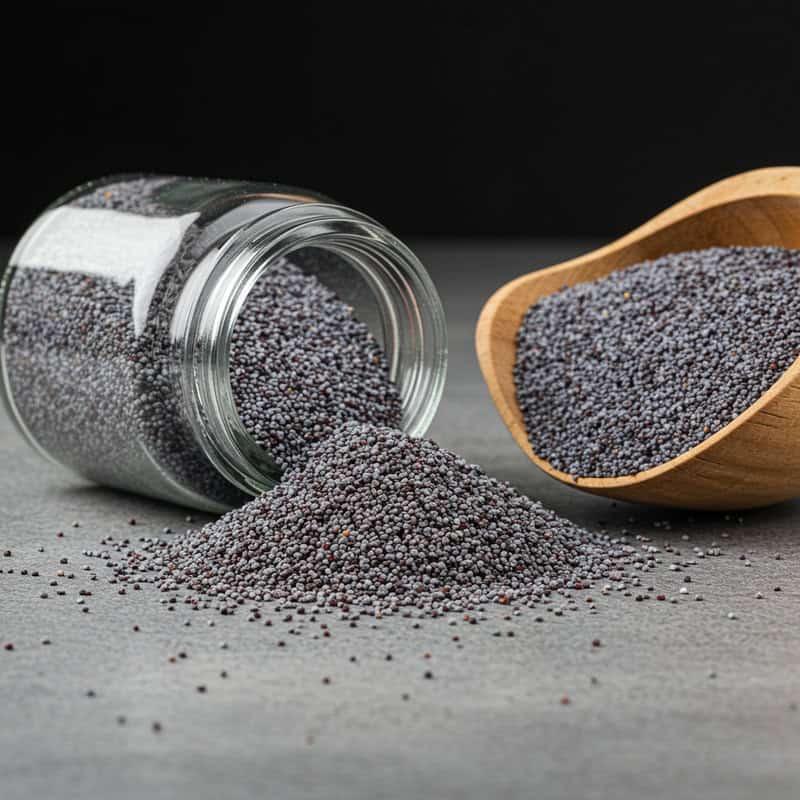
Poppy seeds are tiny, nutty-flavored seeds valued for their rich content of polyunsaturated fats, particularly omega-6 and omega-3 fatty acids. These healthy fats support heart health by helping to lower LDL cholesterol and improve overall lipid profiles. According to a review in the Journal of Food Science and Technology, the consumption of polyunsaturated fats from sources like poppy seeds is associated with a reduced risk of cardiovascular disease and improved cholesterol levels.
Poppy seeds are a beloved ingredient in bakery products across Europe, the Middle East, and North America. They are commonly sprinkled atop breads, bagels, and rolls, adding both a pleasant crunch and a subtle nutty taste. The seeds can also be incorporated into cakes, muffins, and salad dressings for extra texture and nutrition. To enjoy their cholesterol-lowering benefits, try topping homemade bread or crackers with poppy seeds before baking, or stir a spoonful into yogurt or oatmeal. Because of their high oil content, store poppy seeds in an airtight container in the refrigerator to preserve freshness. For more on poppy seeds’ health effects and culinary uses, visit Healthline’s poppy seeds guide.
49. Amchur Powder
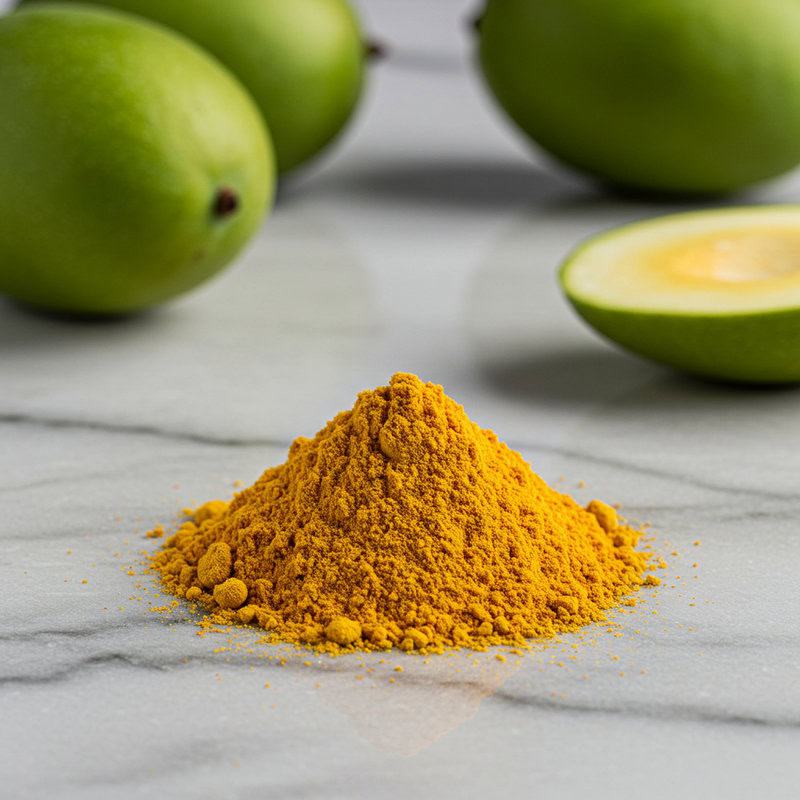
Amchur powder, also known as dried mango powder, is a tangy spice made from unripe green mangoes. It is rich in mango-derived antioxidants such as mangiferin, quercetin, and vitamin C, which help combat oxidative stress and may support healthy cholesterol levels. Research in the Journal of Advanced Pharmaceutical Technology & Research notes that mango antioxidants can reduce LDL cholesterol and improve overall lipid profiles, making amchur a flavorful and healthful addition to your diet.
Amchur powder is a staple in North Indian cuisine, cherished for its ability to impart a sour, fruity tang without adding moisture. It is commonly used in spice blends, chutneys, and dry vegetable dishes, as well as in popular street foods like chaat and samosas. To use amchur, sprinkle a small amount into curries, lentil soups, or marinades for meats and vegetables to brighten flavors and add a subtle tartness. Amchur also works well as a finishing touch on roasted potatoes or grilled corn. For more information on amchur powder’s health benefits and creative flavoring tips, visit Healthline’s mango powder guide.
50. Szechuan Pepper Leaf

Szechuan pepper leaf is an aromatic, citrus-scented leaf from the same plant that produces Szechuan peppercorns. The leaves are valued for their high concentration of polyphenols, powerful antioxidants that help protect against oxidative stress and may support lower cholesterol by reducing LDL oxidation. A study published in the Molecules journal highlights the impressive antioxidant activity found in Szechuan pepper leaves and their potential to benefit cardiovascular health.
In Chinese cuisine, Szechuan pepper leaves are used to add a fresh, zesty note to salads, cold noodle dishes, and herbal wraps. Their subtle numbing effect and citrusy aroma can elevate both light appetizers and more robust entrees. To enjoy their heart-healthy benefits, add a handful of fresh, chopped Szechuan pepper leaves to salads, steamed fish, or mixed vegetable dishes. You can also use the leaves to infuse oils, vinegars, or broths for a unique flavor twist. A daily serving of a few fresh leaves, or a teaspoon of chopped leaf, is sufficient to contribute polyphenols to your diet. For more on Szechuan pepper leaves’ nutritional value and culinary ideas, visit Healthline’s Szechuan peppercorns guide.
Conclusion

Effectively managing cholesterol is essential to reducing the risk of cardiovascular disease, which remains a leading cause of death worldwide. Incorporating heart-healthy spices and herbs into your daily routine offers a flavorful and accessible strategy for supporting better lipid profiles. Alongside regular cholesterol screening and medical advice, making thoughtful dietary choices can have a significant impact on long-term health. From turmeric to Szechuan pepper leaf, your spice rack holds a diverse array of options backed by modern research. Embrace these culinary tools as part of a proactive approach to wellness. For more on cholesterol management and healthy living, visit the CDC’s cholesterol resources.
Disclaimer
The information provided in this article is for general informational purposes only. While we strive to keep the information up-to-date and correct, we make no representations or warranties of any kind, express or implied, about the completeness, accuracy, reliability, suitability, or availability with respect to the article or the information, products, services, or related graphics contained in the article for any purpose. Any reliance you place on such information is therefore strictly at your own risk.
In no event will we be liable for any loss or damage including without limitation, indirect or consequential loss or damage, or any loss or damage whatsoever arising from loss of data or profits arising out of, or in connection with, the use of this article.
Through this article you are able to link to other websites which are not under our control. We have no control over the nature, content, and availability of those sites. The inclusion of any links does not necessarily imply a recommendation or endorse the views expressed within them.
Every effort is made to keep the article up and running smoothly. However, we take no responsibility for, and will not be liable for, the article being temporarily unavailable due to technical issues beyond our control.





